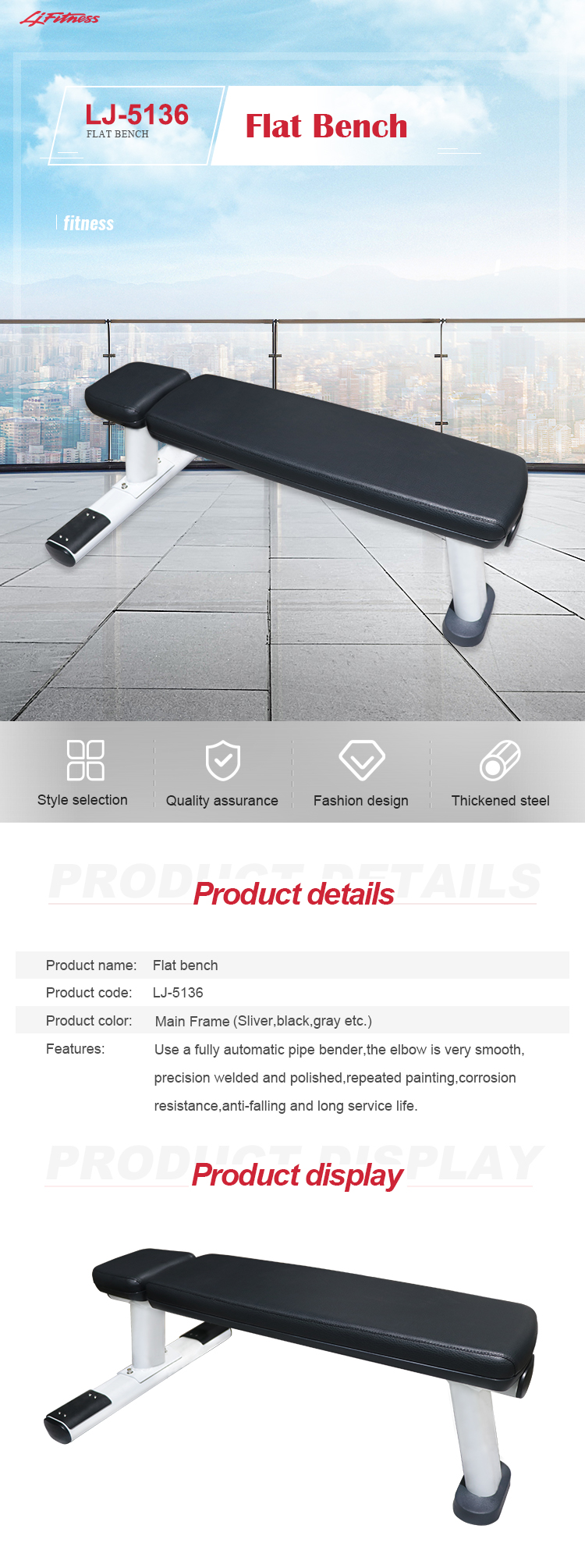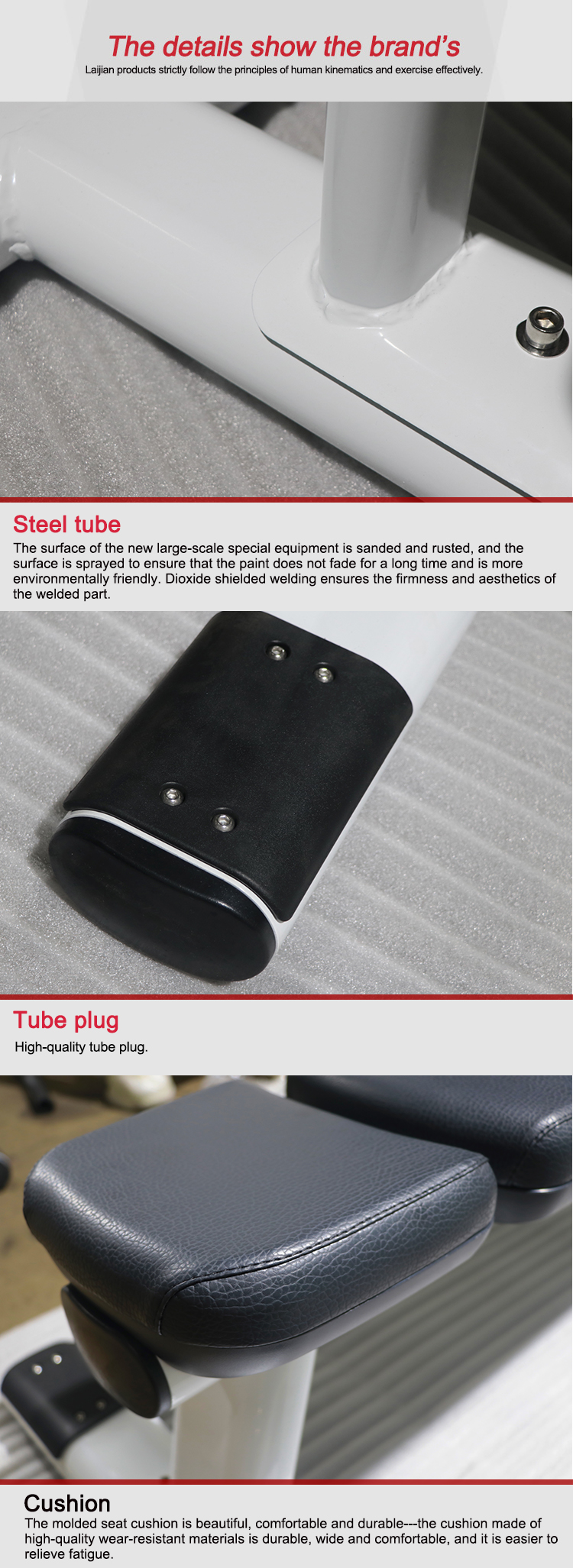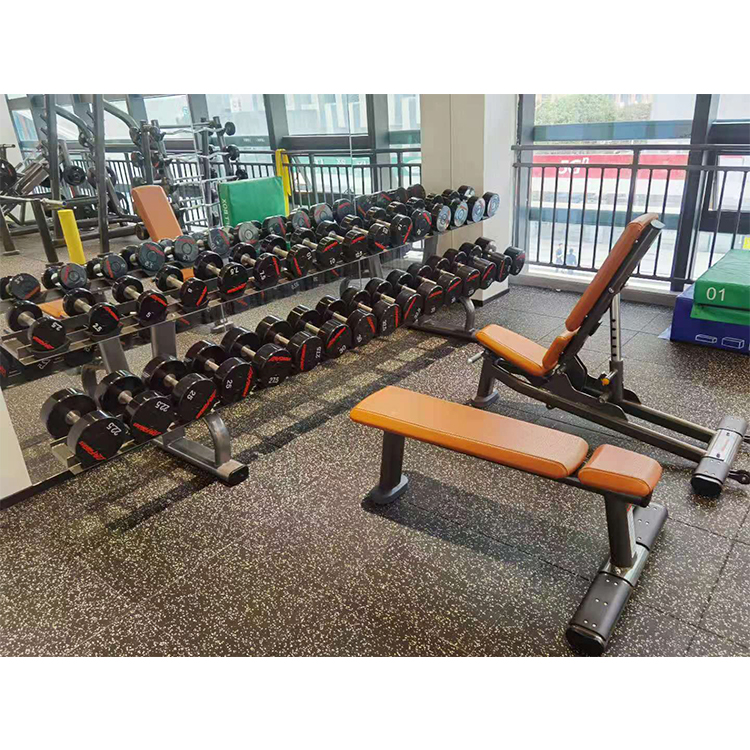A flat bench is a piece of exercise equipment commonly found in gyms and fitness centers. It is a long, flat platform with a padded surface that is used for various exercises, primarily for upper body workouts. The flat bench is most commonly used for exercises such as bench press, dumbbell press, and chest flyes, which target the chest, shoulders, and triceps muscles. It can also be used for exercises that target other muscle groups, such as seated dumbbell curls for biceps or tricep dips. The flat bench provides stability and support during these exercises, allowing for proper form and maximum muscle engagement.Should l start with an incline or flat bench? When it comes to starting your bench press workout, the choice between using an incline, flat, or decline bench depends on your fitness goals, current strength level, and preferences. Here's a breakdown of each option:
1. Incline Bench Press:
- Benefits: An incline bench press places more emphasis on the upper chest, shoulders, and triceps. It can be beneficial for beginners or those looking to target these specific muscle groups.
- Purpose: Good for building upper chest strength, increasing shoulder stability, and improving form.
- Level: Suitable for those who need a lighter load or are just starting out.
2. Flat Bench Press:
- Benefits: The standard flat bench press is a classic exercise that works the entire pectoral muscle group, as well as the anterior deltoids (front of the shoulder) and triceps.
- Purpose: Ideal for overall chest development and strength, and it's often used as a foundation exercise in a linear progression program.
- Level: Suitable for intermediate to advanced lifters who can handle moderate to heavy weights.
3. Decline Bench Press:
- Benefits: A decline bench press primarily targets the lower chest and increases activation of the triceps. It can also help improve shoulder stability.
- Purpose: Great for targeting the lower chest and targeting different angles than the flat bench.
- Level: Advanced lifters or those looking for a specific focus on the lower chest may prefer this variation.
To start, you might consider:
- If you're new to bench press or haven't done it before, begin with an incline bench to reduce stress on your joints and learn proper form.
- If you have good form and want to work on your chest muscles evenly, start with a flat bench.
- If you already have some experience and want to target specific areas, incline or decline benches can be incorporated into your routine based on your goals.
Remember to start with a weight that allows you to maintain proper form throughout the movement and gradually increase the load as you progress. It's always a good idea to consult with a certified personal trainer or coach to ensure you're performing exercises safely and effectively.Will bench press build chest? Yes, bench press is an excellent exercise for building the chest muscles, primarily the pectoralis major muscles, which include the breast muscles that give your chest its shape and appearance. The bench press primarily targets the upper chest, but it also engages the triceps, shoulders, and to some extent, the anterior deltoids.
When performed with proper form and progressive overload (increasing weight over time), the bench press can lead to significant muscle growth and strength in the chest area. It's important to combine bench press with other exercises targeting different aspects of the chest, such as incline bench press for the upper chest, decline bench press for the lower chest, and flyes for the inner chest, to ensure balanced development. Remember to also incorporate proper nutrition and rest to support muscle growth.ls it okay to bench press every day? It is generally not recommended to perform heavy weightlifting exercises like bench pressing every day, especially if you're lifting with high intensity or heavy weights. Your muscles need time to recover and repair after strength training sessions, which is known as the recovery process. Overtraining can lead to fatigue, increased risk of injury, and hindered progress.
A good guideline for most individuals is to allow at least 48 hours of rest between intense workouts for the same muscle group. So, if you're bench pressing as your primary chest exercise, it's better to space your sessions out to three to four days apart. On the other days, you could focus on lighter weight, active recovery exercises or work other muscle groups.
Remember to listen to your body, incorporate proper nutrition, hydration, and sufficient sleep into your routine, and adjust the frequency and intensity based on your fitness level, goals, and any existing injuries. If you're new to weightlifting, it's essential to consult a certified personal trainer or coach to develop a safe and effective training plan.What is better, decline or flat bench? Both decline bench press and flat bench press have their own advantages and purposes, depending on an individual's fitness goals, training level, and specific needs. Here's a breakdown of each:
1. Flat Bench Press:
- This is the most traditional and basic form of the bench press, where the angle between the bar and your chest is around 0 degrees.
- It primarily targets the pectoralis major (chest muscles), anterior deltoids (front shoulder muscles), and triceps brachii (back of the upper arm).
- For beginners or those looking to develop a solid foundation in the exercise, a flat bench press is ideal. It allows for proper form and progression as you increase weight.
- It can be beneficial for overall upper body strength and muscular development.
2. Decline Bench Press:
- In this variation, the bar is positioned at a negative angle (usually around 45-70 degrees) relative to your torso.
- The decline press emphasizes the lower portion of the chest (pectoral minor), increases activation of the triceps, and engages the anterior deltoids to a greater extent.
- If your goal is to target the lower chest or if you have a history of shoulder issues, the decline press can be more suitable, as it places less strain on the shoulders.
- Advanced lifters may use the decline press to target a weak point or to change up their workout routine.
In summary, it's not a question of which one is "better"; it depends on your specific needs and training goals. If you're a beginner or looking for a balanced chest workout, stick with the flat bench press. For targeting the lower chest and increasing tricep involvement, the decline press might be more beneficial. It's always good to incorporate both variations into your training program to ensure a well-rounded chest workout while minimizing the risk of overuse injuries.






